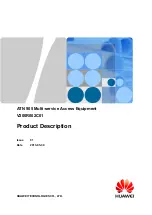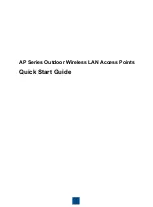
Ruckus Wireless ZoneFlex 2925/2942 User Guide | Managing the Access Point
45
Rate Limiting fields and headings
•
Per Station Traffic Rate
: Each station on the WLAN will be limited to this data rate.
Depending on conditions such as "air quality" (ability for transmit and receive radio signals
by each station), the number of stations with data and how much data they have to send,
the actual transmission rate may be less. Traffic policy is applied equally to each con-
nected device.
•
Downlink
: The "downlink policy" applies to traffic going to any station.
•
Uplink
: The "uplink policy" applies to traffic being sent from a wireless station. The down-
link policy is also applicable to traffic going to another station on the same WLAN, such as
a printer, wi-fi music player, etc.
•
Class
: All network traffic is classified into voice, video, data (best-effort), or background.
Classification determines priority.
•
Voice
: Voice requires the highest priority so that conversations can be readily under-
stood.
•
Video
: The second-highest priority class, video data also requires prompt delivery but is
less sensitive to delay compared to voice.
•
Best-Effort
: Traffic that is not video, voice or background.
•
Background
: The category for everything else: traffic used by network devices to provide
basic network presence, aliveness, and so on. This category is the least sensitive to tran-
sit delay variations, and is given the lowest priority.
•
Rate
: This is the nominal data rate. Assuming available bandwidth, traffic may exceed
this rate but cannot exceed the ceiling.
•
Ceiling
: This is the absolute limit, subject to lowered actual rates if either the existing
"air quality" is low, or traffic from higher-priority classes prevents reaching the "ceiling"
value, or some combination of these.
•
Buffer
: This is the number of packets that can be queued waiting for their turn to be
sent. This allows limited ability to handle traffic bursts but prevents exceeding the per-
mitted rate, i.e., excessive traffic will be dropped.
















































